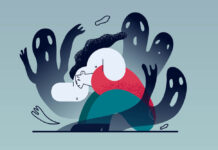This month’s issue of JAMA Psychiatry ran an editorial commenting on recent research revealing that the majority of youth prescribed antipsychotics have not been diagnosed with a mental disorder. For these youth, the harms outweigh the benefits.
In July, research by Olfson et al. was made available online documenting the prevalence of off-label prescribing practices, the frequency with which antipsychotic medications are prescribed to children by non-psychiatrists, and the overall lack of psychosocial and therapeutic interventions.
To see MIA’s coverage of the Olson study, click here→
In their editorial, Christoph Correll and Joseph Blader, discuss the overuse of antipsychotics in youth in the United States. They warn that the potential side effects- including, “weight gain, and lipid and glucose abnormalities,” as well as diminished brain volume and neuronal density- outweigh potential benefits.
Olfson’s research suggests that a large number of antipsychotic prescriptions in youth are being used to control behavior and aggression. Correll and Blader point out that “other interventions, with lower adverse effect burdens, when implemented adequately, can avert the need for antipsychotic treatment.” They propose stimulants and family-based behavioral treatment as alternatives.
Fewer than 25% of all young people receiving antipsychotic prescriptions in Olfson’s study had received any psychotherapeutic services. Correll and Blader conclude from these results that antipsychotics “may be used hastily and for too long to suppress problematic behaviors while guidance for families about behavioral interventions that might curb such behaviors is disregarded.”
The authors recommend that prior authorization for antipsychotics prescriptions in youth may help to decrease the number of children receiving these drugs without a diagnosis. They point to a 2012 study that assessed the impact of Florida’s requirement of prior authorization for antipsychotics for children under age six, which found that the law decreased prescriptions and directed physicians to safer alternatives.
*
Correll, C. U., & Blader, J. C. (2015). Antipsychotic Use in Youth Without Psychosis: A Double-edged Sword. JAMA psychiatry. (Abstract)















There should be no question that the use of anti-psychotic drugs in children without signs of psychosis should be made illegal. It would be nice if the use of all psychiatric drugs in children and adolescents was banned, but unfortunately this is unlikely to happen.
The problem, of course, is that doctors can always make a diagnosis, such as bipolar, to substantiate the inappropriate use of medication. However, one could make anti-psychotics restricted drugs that only psychiatrists can prescribe, and then have clear indications, with the necessity of two psychiatric opinions before prescribing psychiatric medication to children.
It should be evident that children and adolescent brains are in the process of developing, and that any outside contamination of the brain will interfere with normal development.
Behaviour problems in children should always be seen in a family and social context. Whatever happened to the concept of the “identified patient” that saw the behaviour problems of a child as a symptom of a system dysfunction?
Report comment
I would hesitate to use them on kids even if they are experiencing psychosis. The drugs are toxic to everyone in general and particularly so in kids.
Report comment
” However, one could make anti-psychotics restricted drugs that only psychiatrists can prescribe, and then have clear indications, with the necessity of two psychiatric opinions before prescribing psychiatric medication to children.”
No, no and no. And I would oppose this prescription even if you required 1,000 psychiatrists to certify that neuroleptics (or any other psychotropics) are necessary or appropriate for a minor.
As for your statement that “(B)ehaviour problems in children should always be seen in a family and social context, that’s a big part of it, for sure, but so are other environmental and epigenetic factors, such as toxins (polluted air and water, chlorine, fluoride, mold, heavy metals, etc.), pesticides, nutrient deficiencies or overloads, poor diet (processed carbohydrates, gluten, transfats), poor gut health, social stress, bullying and discrimination.
Report comment
“requirement of prior authorization for antipsychotics for children under age six”
Six? Seriosuly? No six year old kid needs an anti-psychotic. It’s crazy.
Report comment
I do so hope the medical / psychiatric industry wakes up and realizes that when you give non-psychotic people / children antipsychotics, you can create the negative symptoms of “schizophrenia” via neuroleptic induced deficit syndrome – but you almost always misdiagnose this, and add more drugs. Which then allows the psychiatrist to create an actual psychosis, and the other positive symptoms of “schizophrenia,” via neuroleptic induced anticholinergic intoxication syndrome (aka anticholinergic toxidrome).
Truly, creating serious mental illnesses in children with the antipsychotics is unforgivable behavior. Historically, only evil countries advocate belief in scientifically invalid “mental illnesses.” Wake up governments.
Report comment
If they weren’t “sick” to begin with they surely will be when the drugs get through with them!
Report comment
I can buy into that.
Report comment
Exposure to “antipsychotics” is probably the easiest way to become “Schizophrenic” (or chronically psychiatric).
Report comment
I have seen this happening for decades. There are several ongoing issues. Good true therapeutic milue treatment is now history. Second families are stressed and burdened to the max and the easy cheap solution is to go for medication for difficult behaviors. How can any child regardless of age cope with issues when either Mom or Dad or both are scheduled to work on call or at a moment’s notice. Worker rights are actually family and children’s rights!
For the corporate world they truly truly don’t care what happens to families and children. Hey there are pills for all that!
Everything in this world is interwoven and unless we speak out – as it seems we are beginning to hear – it will only lead to great great troubles. One can only keep people down and out for so long before like Langston Hughes wrote it ” explodes like a raisin in the sun”
Report comment
Too true! And it’s especially easy when the medical profession provides “cover” for the practice.
In what other specialty would it be allowable for doctors to prescribe drugs to patients who have no diagnosis whatsoever? The use of steroids or stimulants for athletic performance comes directly to mind. This is considered ILLEGAL and can result in criminal punishment! And yet, to give an antipsychotic to a little kid without even bothering to find out why they’re acting that way – standard practice now.
This is repulsive and shows how low the psychiatric profession and medicine in general has sunk. It’s time for an avenging angel to sweep those promoting the current way of “thinking” about kids and behavior into the sea. The criminals are running the show!
—- Steve
Report comment
“For these youth, the harms outweigh the benefits”
Gee thanks cap obvious.
Supersensitivity Psychosis: The Evidence
And imagine the public outcry if these drugs were used in animal shelters to make the dogs quit barking and notice the lack of it when they are used to make children shut up and be quite.
Report comment